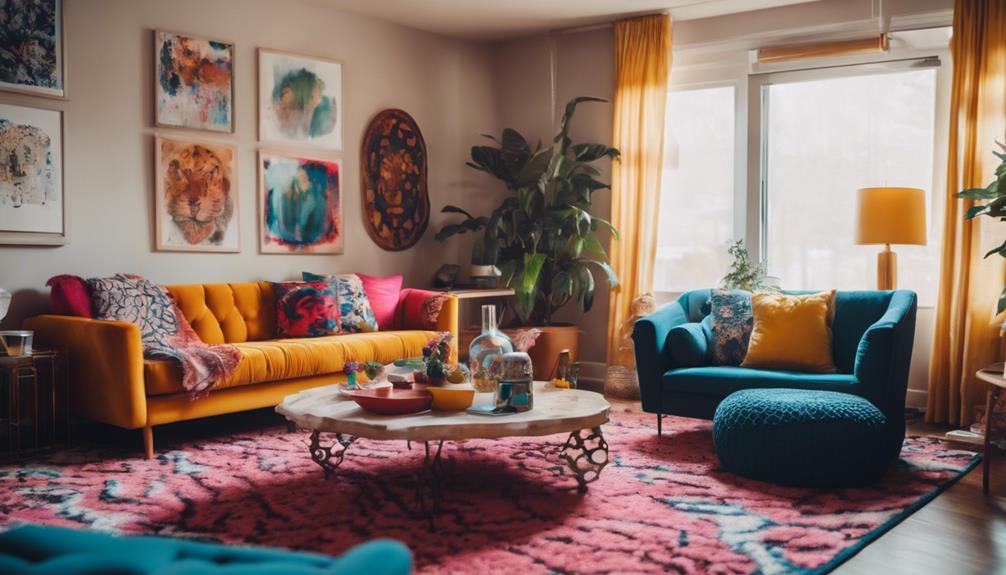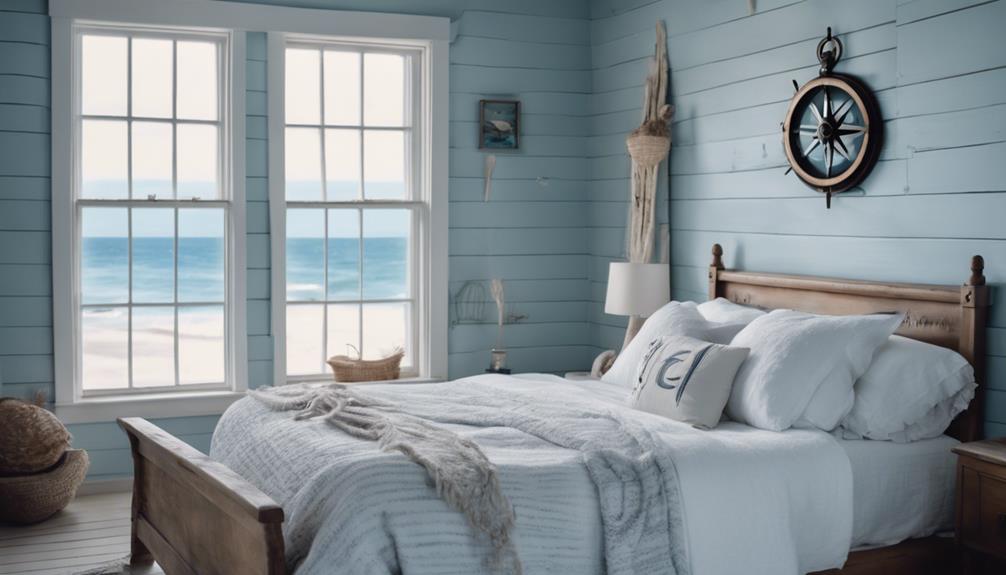Step into the electrifying world of modern eclectic design, where styles clash, and meltdowns turn into masterpieces. Embrace the chaos of mixing different eras, textures, and colors to create a space that's uniquely you. Overcome the fear of making decisions by taking small steps and learning from trial and error. Remember, every choice adds to your confidence in crafting a space that reflects your personality. Find solace in the beauty of the unconventional, and discover how this mix can transform your decor anxieties into innovative design solutions.
Key Takeaways
- Embrace eclectic decor style's mix of periods and sources for a unique look.
- Overcome decorating anxiety by starting small and embracing trial and error.
- Seek feedback and engage with a supportive community for design confidence.
- Prioritize essential decor expenses to avoid budget overwhelm.
- Stay flexible in spending, mixing high-end with budget-friendly items for a dynamic interior.
Fear of Making Decorating Choices
Feeling overwhelmed by the fear of making decorating choices can lead to indecisiveness and dissatisfaction with your home decor. This fear can be paralyzing, causing you to second-guess every decision from selecting furniture to choosing colors and decor.
The worry about making the wrong choices can prevent you from taking any action, keeping you stuck in a decorating rut. It's understandable to feel anxious about making permanent decisions for your living space, but letting this fear control you can hinder your ability to create a home you love.
To overcome this fear, consider starting with small steps. Experiment with different styles and colors on a smaller scale before committing to larger purchases. Building confidence in your design choices involves embracing the idea of trial and error.
Indecisiveness and Confidence
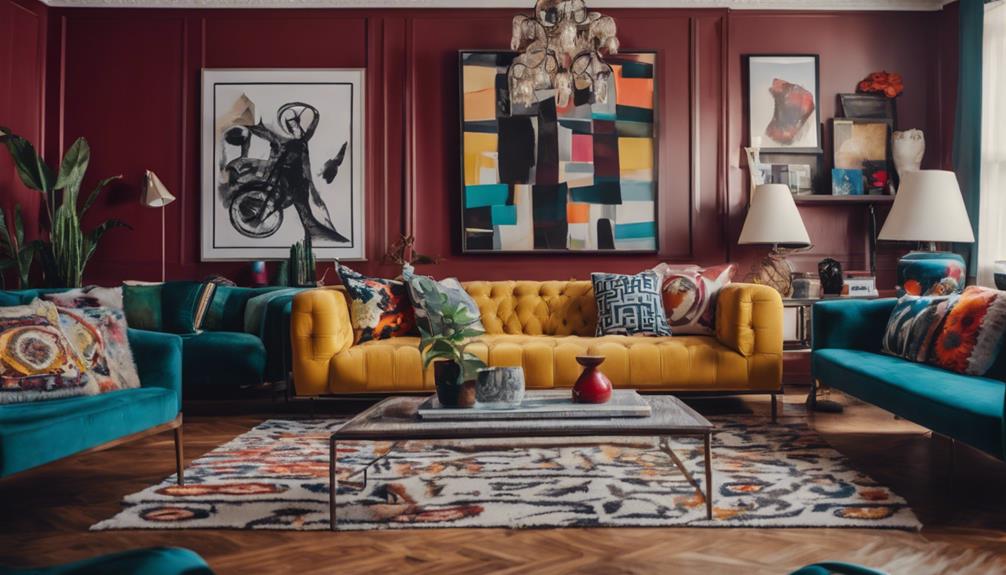
When faced with indecisiveness in your decorating choices, remember that building confidence is a process that involves taking action and learning from trial and error.
Embrace the uncertainty and start making decisions, even if they feel intimidating at first.
Overcoming indecisiveness starts with gaining confidence in your unique style and design preferences.
Confidence-Building Through Action
To overcome indecisiveness in decorating, taking action and making decisions, even imperfect ones, is key to building confidence in your design choices.
It's normal to feel unsure about where to start or what direction to take, but remember that confidence grows with each step you take towards creating a space that reflects your style and personality.
Here are some tips to help you boost your confidence through action:
- Start small by making simple decorating decisions, like rearranging furniture or adding a pop of color with throw pillows.
- Experiment with different styles and patterns to see what resonates with you and what doesn't.
- Seek inspiration from home decor magazines, social media, or even nature to spark creativity and confidence in your design choices.
- Don't be afraid to make mistakes; learning from what doesn't work is just as important as celebrating what does.
- Remember that decorating is a journey, and each decision you make contributes to your unique design story.
Embracing Trial and Error
Embracing the process of trial and error in decorating is essential for developing your confidence and refining your design style. Overcoming indecisiveness requires actively engaging in experimentation to uncover your unique aesthetic preferences. By trying out different decor choices, you have the opportunity to learn from your mistakes and fine-tune your tastes over time. Building confidence in decision-making involves taking action and being open to exploring new possibilities.
Indecisiveness can only be conquered by making choices, no matter how small, and embracing the potential for growth through trial and error. This process not only aids in self-discovery but also allows you to create a space that truly reflects your personality and individuality. Each design decision made, even if it initially seems uncertain, contributes to a more refined and personalized decor style.
Lack of Confidence and Overwhelm
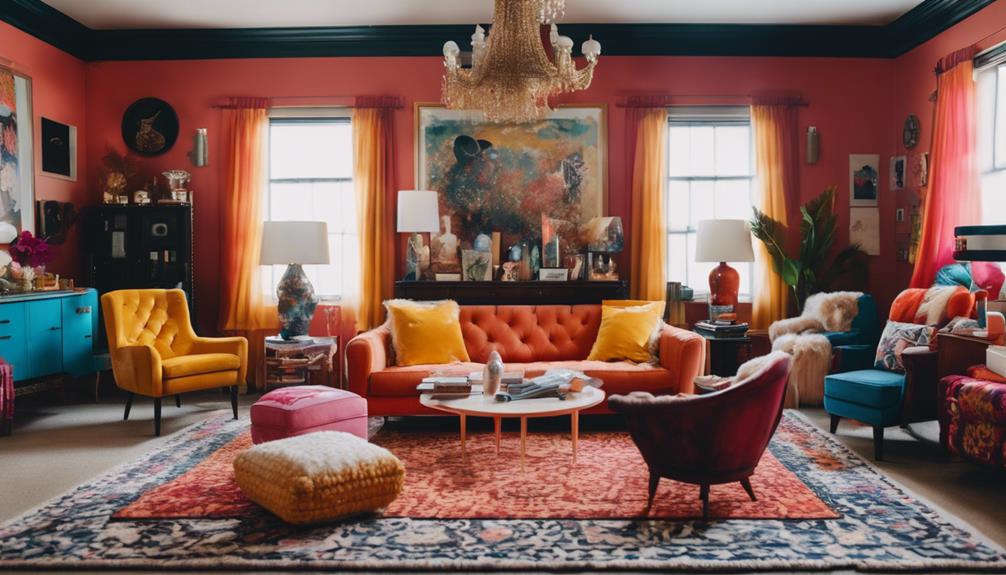
Feeling uncertain about your decorating skills can easily lead to a sense of overwhelm when faced with a diverse array of design options. The lack of confidence in your abilities can make it challenging to navigate through the myriad of choices available in interior design.
Here are some tips to help you combat this lack of confidence and overwhelm:
- Remember that everyone starts somewhere; even professional designers had to begin as beginners.
- Break down your decorating project into smaller tasks to make it more manageable and less intimidating.
- Seek inspiration from various sources like magazines, social media, or home décor shows to help you define your style.
- Don't be afraid to make mistakes; they're a natural part of the learning process and can lead to creative solutions.
- Surround yourself with a supportive community of friends or online groups who can provide encouragement and advice when needed.
Overwhelmed and Starting
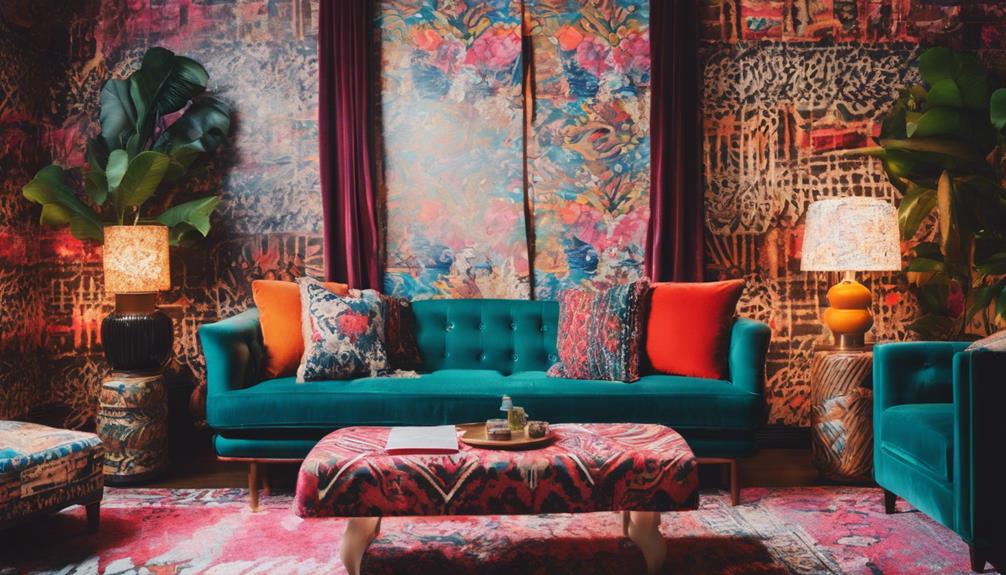
Starting an interior design project can be overwhelming, especially when you're unsure of where to begin. The feeling of being stuck at the starting line is common but can be overcome by taking some key steps.
First, creating a plan and establishing a budget can provide a roadmap for your project, helping to alleviate some of the initial stress.
Prioritizing which areas of your space need the most attention can also help you focus your efforts and prevent feeling overwhelmed by trying to tackle everything at once.
Feedback and Engagement
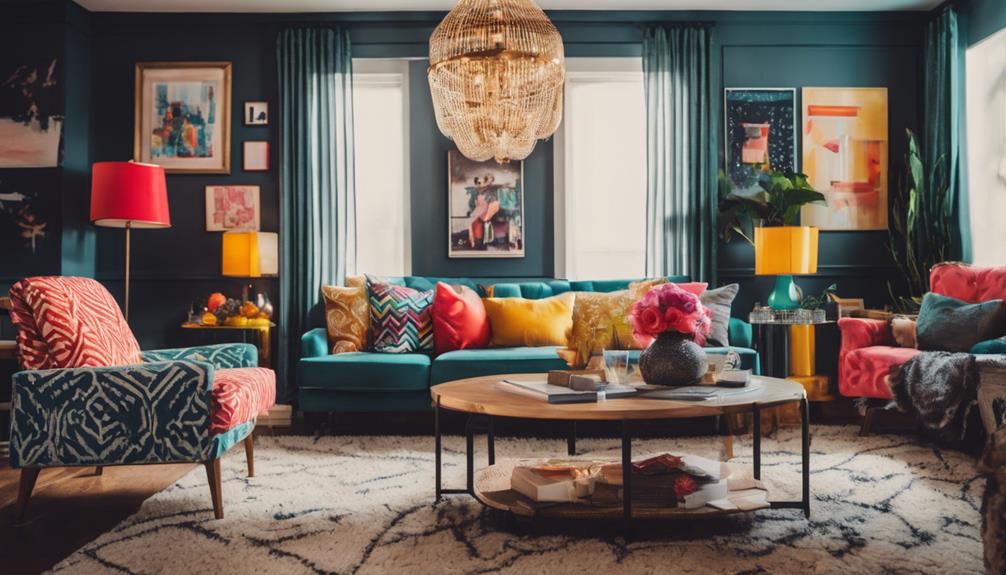
Readers' feedback and engagement play an essential role in shedding light on the challenges faced in modern eclectic design. Your input is invaluable in understanding the struggles and triumphs of maneuvering through the world of interior design.
Here are some ways in which your feedback and engagement can make a difference:
- Insightful Experiences: Sharing your decorating experiences provides valuable insights for others facing similar challenges.
- Community Support: Engaging with the content fosters a supportive community where tips and advice can be freely exchanged.
- Overcoming Challenges: Your comments can spark discussions on how to overcome decorator meltdowns and design dilemmas.
- Dialogue Creation: By sharing your opinions, you contribute to a dialogue that helps others handle interior design insanity.
- Author Interaction: Interacting with the author and fellow readers creates a space for collaboration and learning from each other's experiences.
Your engagement isn't only beneficial to you but also to the broader community seeking inspiration and guidance in the domain of modern eclectic design.
Building Decorating Confidence
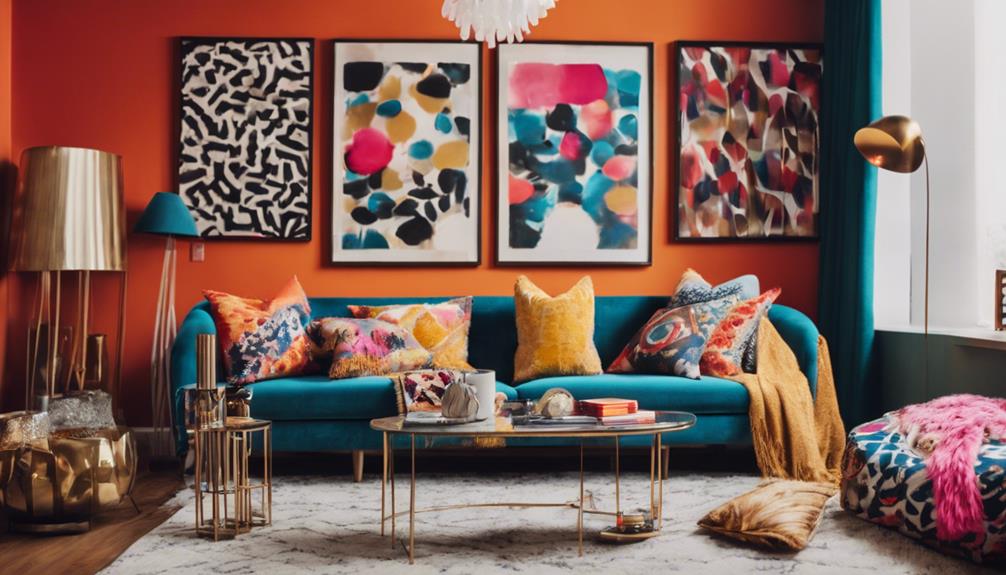
To build decorating confidence, embrace experimentation and seek inspiration from diverse sources. Confidence in decorating can be cultivated by stepping outside your comfort zone and viewing mistakes as opportunities to learn and grow.
Start by making small changes to your space that challenge your usual style preferences. Try mixing different patterns, experimenting with bold colors, or incorporating unique decor pieces.
Seek inspiration from a variety of sources such as interior design magazines, social media platforms like Pinterest and Instagram, and even nature or art galleries. By exposing yourself to different styles and aesthetics, you can broaden your design perspective and find elements that resonate with you.
Additionally, surrounding yourself with a supportive community of decorators can provide valuable feedback and encouragement. Share your ideas with others, seek advice, and celebrate your decorating wins together.
Building decorating confidence is a journey that involves exploring new possibilities and trusting your instincts.
Overcoming Decorating Paralysis
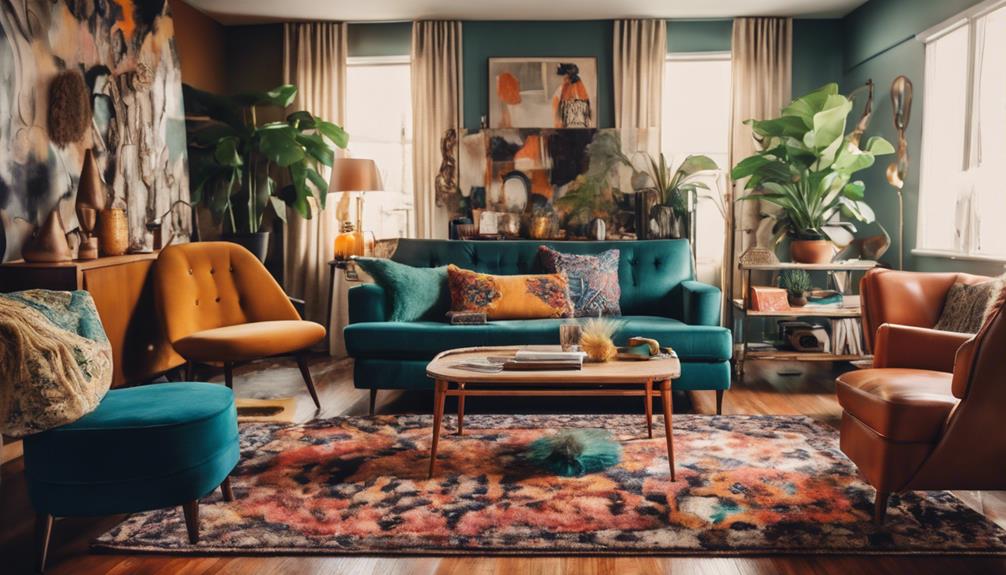
Fear of making the wrong choices and feeling overwhelmed often causes decorating paralysis. This indecisiveness can lead to dissatisfaction with purchases and a feeling of being stuck in a decor rut. To overcome this paralysis, you need to take action and build confidence in your choices.
Here are five practical steps to help you move forward:
- Start with a plan: Create a vision for your space to guide your decisions.
- Set a budget: Knowing your financial limits can help narrow down choices.
- Prioritize spaces: Focus on one area at a time to avoid feeling overwhelmed.
- Embrace trial and error: Don't be afraid to experiment and learn from your mistakes.
- Seek inspiration: Look for design ideas online, in magazines, or by visiting decor stores for motivation.
Embracing Eclectic Decor Styles
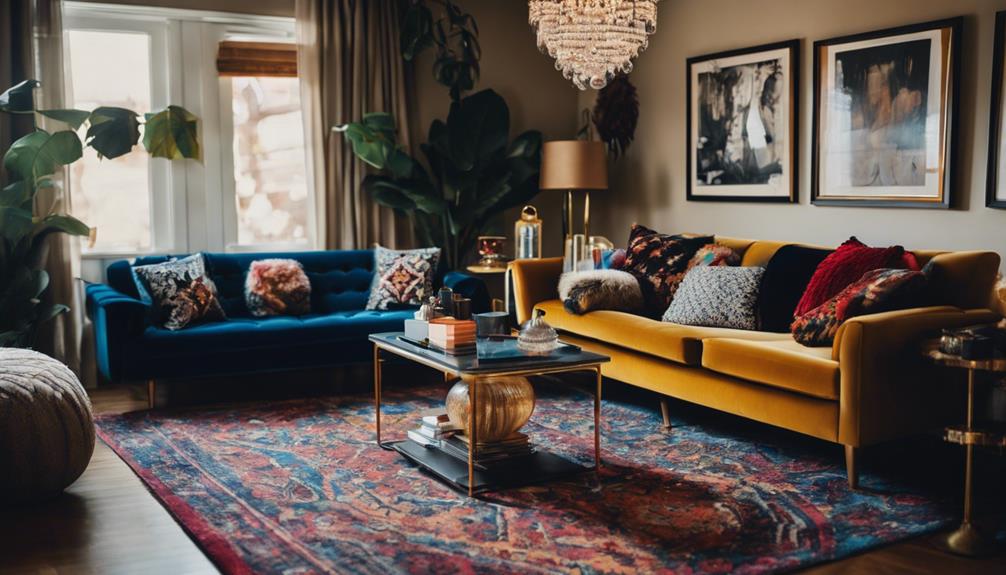
Embracing eclectic decor styles allows you to mix elements from various design periods and sources, creating a unique and personalized look for your space. By blending different textures, patterns, colors, and furniture pieces, you can craft a visually dynamic and interesting interior that reflects your individual style. This design approach breaks away from traditional rules, allowing for creative expression and a showcase of your personality.
Incorporating eclectic elements such as vintage finds, modern pieces, retro accents, and handmade items adds depth and character to your home. The eclectic style invites you to think outside the box and curate a space that's truly one-of-a-kind.
Embracing this mix-and-match method can be a fun and rewarding experience, offering you the freedom to experiment with various design elements and create a space that feels uniquely yours. So, don't be afraid to embrace the eclectic decor style and let your creativity shine through in your home decor!
Budgeting for Decor Success
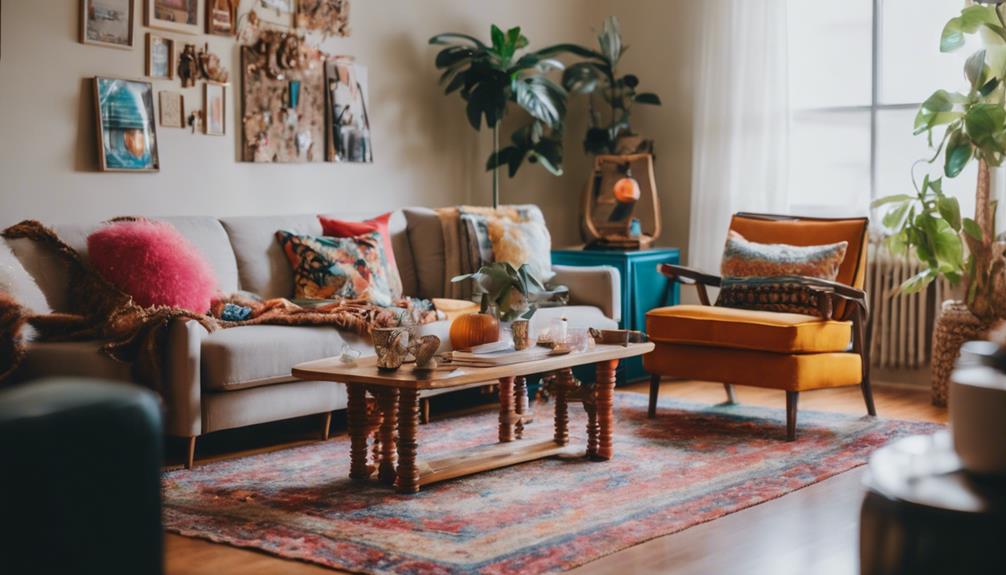
When it comes to achieving decor success, setting a realistic budget is key. Prioritizing your expenses and staying flexible in your spending can help you navigate unexpected costs.
Understanding budgeting essentials, such as researching prices and considering cost-effective options like DIY projects, is essential for effective planning.
Budgeting Essentials Explained
Setting a clear budget aligned with your financial goals and priorities is essential for successfully budgeting for decor. To make the most of your decorating budget, here are some budgeting essentials explained:
- Understand Your Limits: Being realistic about what you can afford is vital in budgeting for decorating.
- Prioritize Key Items: Focus your spending on essential items like furniture, paint, and decor pieces to stay within your budget.
- Research and Compare: Take the time to research prices, compare options, and look for sales or discounts to maximize your decorating budget.
- Stay Flexible: Allow for adaptability in your budgeting approach to make adjustments as you navigate the decorating process and encounter unexpected expenses.
- Track Expenses: Keep a close eye on your spending to make sure you're staying on track with your budget goals.
Prioritizing Your Expenses
To achieve budgeting success for your decor project, it is vital to prioritize your expenses effectively. Setting a budget will guide you in making informed decisions on where to allocate your funds. Understanding your financial limits is pivotal to prevent overspending and financial stress during the decorating process. By identifying essential purchases versus optional items, you can stay within your financial means and invest in key pieces that will have the most impact on your space.
| Essential Purchases | Optional Items |
|---|---|
| Quality furniture | Decorative accents |
| Functional lighting | Artwork or sculptures |
| Durable rugs | Extra throw pillows |
| Paint or wallpaper | Trendy decor pieces |
Flexibility in Spending
Achieving decor success through a modern eclectic mix requires a flexible approach to spending, allowing for a harmonious blend of high-end pieces and budget-friendly finds.
To budget effectively for your eclectic interior design, consider the following tips:
- Set a Realistic Budget: Determine how much you're willing to spend on different elements of your decor.
- Mix High-End with Budget-Friendly: Combine luxurious items with more affordable pieces for a well-rounded look.
- Prioritize Key Pieces: Invest in standout items like a statement sofa or unique artwork to anchor your design.
- Invest in Quality: Allocate funds for durable, timeless pieces that will last for years to come.
- Embrace DIY and Thrifted Finds: Get creative with do-it-yourself projects and secondhand treasures to add personality to your eclectic mix.
Creating a Decor Action Plan
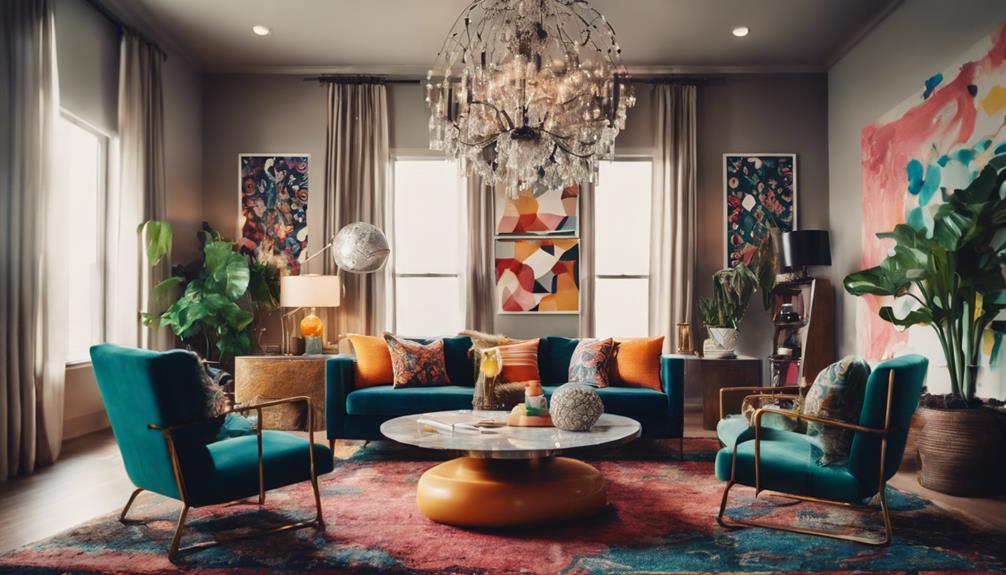
Crafting a solid decor action plan hinges on clearly defining your goals and priorities for the space. Begin by establishing a well-defined budget to effectively execute your plan.
Prioritize which rooms or areas to tackle first to prevent feeling overwhelmed by the process. Remember that flexibility is key, as your plan may evolve as you start making changes.
Taking that first step towards your decor action plan is essential for making progress and overcoming any indecisiveness you may feel. By setting specific goals, creating a realistic budget, and prioritizing your tasks, you can ensure a successful execution of your decor action plan.
Stay organized, stay focused, and be open to adjustments along the way. With a clear direction and a determined mindset, your decor action plan will bring your design vision to life in a cohesive and harmonious manner.
Frequently Asked Questions
Does Interior Design Affect Mental Health?
Interior design can impact mental health by causing fear, indecisiveness, and overwhelm. Lack of confidence in decorating abilities may lead to dissatisfaction. Overcoming decorating overwhelm with a plan and budget can alleviate stress.
Why Am I so Bad at Decorating My House?
You feel overwhelmed and lack confidence in decorating your house. Fear of making wrong choices holds you back. Take small steps and trust your instincts. Embrace the process, learn from mistakes, and gradually build confidence.
What Is Modern Eclectic Interior Design?
Modern eclectic interior design blends different styles, colors, and eras to create a personalized and dynamic space. It involves mixing modern and traditional elements to achieve a cohesive yet diverse look, encouraging creativity and self-expression.
What Are Bad Things About Interior Design?
When it comes to interior design, bad choices can clutter your space, create chaos, and lack harmony. Mismatched colors or furniture, overcrowding with decor, improper scale, and neglecting functionality can all lead to a visually unappealing environment.
Conclusion
So, next time you're feeling overwhelmed by the endless choices in interior design, remember this: 52% of people report feeling stuck when it comes to decorating their homes.
But don't let that stop you from embracing eclectic styles and creating a space that truly reflects your unique personality.
With a little confidence, some budgeting savvy, and a solid action plan, you can conquer your decorating paralysis and create a home that you love.

